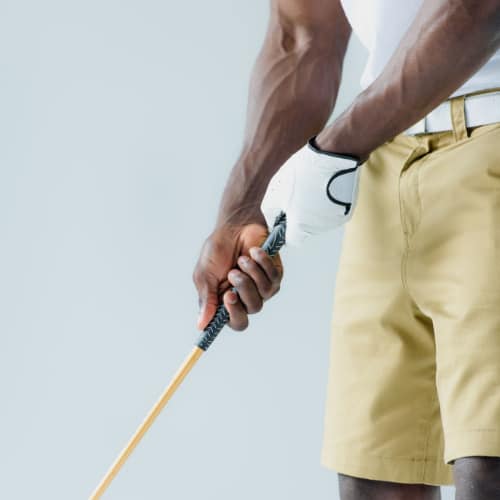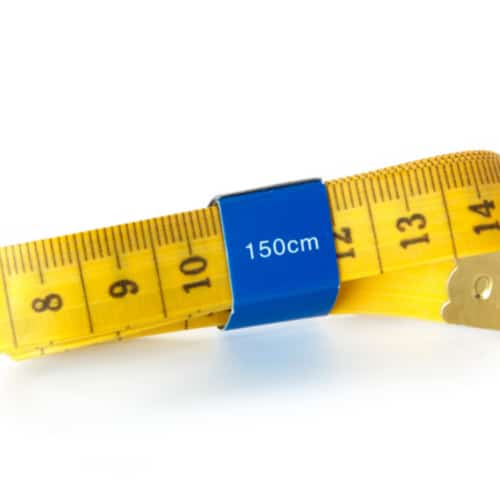When it comes to golf club fitting, one of the most important factors is the length of the driver shaft. The length of the shaft can affect your swing speed, accuracy, and distance. Choosing the right length can make a significant difference in your game.
But how do you determine the right length for your driver shaft? In this ultimate guide, we will explore everything you need to know about driver shaft length. From the factors that affect the length to the pros and cons of different lengths, we’ll cover it all.
Let’s dive in and discover how to choose the perfect driver shaft length for you.
- 1) What’s the Standard Driver Length
- 2) What Is The Ideal Shaft Length?
- 3) Driver Shaft Length by Height Chart
- 4) How to Measure Your Driver Shaft Length?
- 5) Distance vs. Accuracy: Driver Shaft Length Balance
- 6) What Length Driver Do the Best Club Fitters Recommend for Most Golfers?
- 7) What Happens When You Cut Down a Driver?
- 8) How Long Are PGA Tour Professionals’ Drivers?
- 9) Restrictions of Shaft Length in Professional Golf
- 10) Does a Longer Shaft Mean More Distance?
- 11) What Works Best For You?
- 12) Final Thoughts
What’s the Standard Driver Length
When it comes to driver shaft length, standard length varies for men’s and women’s clubs. The typical length of a men’s driver shaft is around 45 inches, while for women, it is approximately 44 inches. However, these numbers may vary depending on an individual’s height, swing speed, swing weight, and other factors that can impact the club’s performance.

Driver shaft length has increased over the years for several reasons. First, as golf ball technology has advanced, the need for increased swing speed has become more apparent. A longer shaft allows for a faster swing, resulting in a higher ball speed and longer tee shots. Additionally, manufacturers have discovered that many golfers associate a longer shaft with the perception of power. This has prompted them to design clubs with a longer shaft length to attract buyers.
Since 2020, off-the-rack driver models from TaylorMade, Callaway, PING, and Titleist come with slightly varying shaft lengths. Here’s a quick table with a few examples to see the difference:
| Brand | Model | Shaft Length (inches) |
|---|---|---|
| TaylorMade | SIM | 45.75 |
| Callaway | Mavrik | 45.5 |
| PING | G410 | 45.25 |
| Titleist | TS3 | 45.5 |
What Is The Ideal Shaft Length?
Your height, age, ball speed, and swing speed all play a role in determining the best shaft length for your game. Male golfers typically use longer shafts than female golfers due to the difference in their height and swing speed.

As a general guideline, the ideal driver shaft length for male golfers ranges from 45-48 inches, while female golfers often use a shaft length between 43-45 inches. However, keep in mind that these are just guidelines, and trying out different lengths and flexes (the club’s ability to bend during the swing) is crucial to finding the perfect fit.
A professional club fitter can assist in finding the right driver length for your game. They will take into account your swing action, club head speed, and other measurements such as floor-to-wrist measurements to determine the correct club length for your body.
Driver Shaft Length by Height Chart
To determine the recommended shaft length based on your height, golf club manufacturers use the Driver Shaft Length by Height Chart, which uses the player’s wrist-to-floor measurement to gauge the correct club length.
Let’s explore the different height categories and the corresponding recommended shaft length based on the chart.
| Height / Wrist To Floor | Recommended Shaft Length (Inches) |
|---|---|
| Under 5’2″/ 28.5″-30.5″ | 44″ – 45″ |
| 5’2″ – 5’6″ / 33″-35″ | 45″ – 45.5″ |
| 5’6″ – 6’0″ / 32″-39″ | 45.75″ – 46″ |
| 6’0″ – 6’6″ / 34″-41″ | 46″ – 46.75″ |
| Over 6’6″ / >41″ | 47.25″ |
Choosing the correct driver shaft length based on your height can have a significant impact on your swing speed, ball speed, and overall performance. Take the time to measure your wrist-to-floor and use the Driver Shaft Length by Height Chart to find your recommended shaft length. Women’s shafts are usually one inch shorter than men’s.
How to Measure Your Driver Shaft Length?
To accurately measure the length of your driver shaft, you should lay the driver flat on the ground with the clubhead pointing outwards. Take a measuring tape and measure from the end of the grip down to the heel of the club. This measurement will give you the length of your driver shaft.

It is important to note that the standard length for a ladies’ driver is typically an inch shorter than it is for men. This is because female golfers tend to be shorter in height, have less club head speed, and a slower swing speed. However, taller golfers, both male and female, may require a longer driver shaft.
It is also important to keep in mind the new local rule, issued by the USGA and R&A, that limits driver length to 46 inches (before, the limit was 48″). This rule was created to preserve the balance between skill and technology in the game of golf. A club longer than 46 inches may provide an unfair advantage and violate the rules of golf.
By measuring your driver shaft length, you can determine if a shorter or longer shaft is necessary for your swing.
Distance vs. Accuracy: Driver Shaft Length Balance
Distance and accuracy are both important in golf. Finding the right balance between the two is key to improving your game.

A longer shaft provides a larger arc during the swing, allowing the golfer to generate more speed and potentially hit the ball farther. However, it’s worth noting that longer shafts can also make it more challenging to strike the ball consistently in the center of the clubface, which may offset the potential distance gains.
Check Also: Hit It Long and Straight: Golf Drills & Tips to Elevate Your Driving Game
Generally, shorter shafts offer better control and can enhance accuracy. A shorter shaft provides more control over the clubhead throughout the swing, making it easier to square the face at impact. This can lead to more accurate shots and tighter dispersion patterns. Longer shafts, on the other hand, can be more challenging to control, especially for golfers with less consistent swings.
Ultimately, it’s important to find the right balance between distance and accuracy. A professional club fitter can help you determine the ideal shaft length for your swing and player profile. Additionally, other factors like shaft flex, weight, and overall clubhead design also influence performance.
What Length Driver Do the Best Club Fitters Recommend for Most Golfers?
The best club fitters recommend that most golfers use a driver at or near standard length. Research has shown that the average golfer performs best with a standard-length driver shaft. However, if you are significantly shorter or taller than the average height, a non-standard length shaft may be necessary for optimal performance.
Professional club fitters take into account your swing speed, wrist-to-floor measurements, swing weight, and clubhead speed when determining the ideal driver shaft length for you.
Overall, the majority of golfers will benefit from using a standard-length driver shaft. Consult with a professional club fitter and take accurate measurements using a tape measure to ensure that you are using the correct club for your height and swing action.
What Happens When You Cut Down a Driver?
When you cut down a driver shaft, several things happen. The swing weight of the club becomes lighter, and the overall stiffness of the shaft increases. The swing weight is important because it affects the balance of the club during the swing. Cutting down a shaft can cause the club to feel head-heavy, which could result in a slower swing.

To address the swing weight, you can add additional weights to the clubhead or grip to compensate for the loss of weight. Another option is to have the shaft tipped to make it stiffer and reduce the overall weight of the club.
How Long Are PGA Tour Professionals’ Drivers?
When it comes to driver shaft length, PGA Tour professionals typically use drivers between 44-46 inches long. This standard length allows for a good balance between swing speed and control. However, some players deviate from this norm, such as Rickie Fowler and Phil Mickelson, who prefer drivers with different lengths than the norm.
Fowler, known for his unorthodox swing, uses a driver that is 43.5″, while Mickelson has been known for using extra-long drivers of around 47.5 inches (and even used a 48″ driver to win the Kiawah Island, S.C. PGA Championship). Bryson DeChambeau is another pro golfer that uses 48″ long drivers.
Overall, while the majority of professionals use drivers between 44-46 inches, it’s ultimately about personal preference and finding the correct fit for your game.
Restrictions of Shaft Length in Professional Golf
As of January 2022, professional golf introduced restrictions on driver shaft length, limiting it to a maximum of 46 inches.
The new rule aims to cap the increase in swing speed that longer shafts offer, reducing the distance a golf ball travels off a tee shot.
However, this restriction won’t impact the majority of golfers who play recreationally, as the Rules of Golf still permit driver shaft lengths up to 48 inches.
While some players, like Phil Mickelson and Bryson DeChambeau, have expressed their resistance to the rule, most pros understand the rationale behind it.
Professional golfers invest a lot of time and money to perfect their swings and increase their performance. Yet, this rule will ensure a level playing field, preventing a golf ball from traveling excessive distances off the tee and promoting fairness and skill over sheer power.
So, unless you’re a high-level competitor concerned about the new restriction, there’s no need to worry about the length of your driver shaft.
Does a Longer Shaft Mean More Distance?
A longer driver shaft can potentially mean more distance, but it’s not a guarantee. The relationship between driver shaft length and distance is not linear, meaning that longer shafts won’t always result in longer shots. Your swing speed, timing, and the specific clubhead can all affect how much distance you get based on your driver shaft length.

A longer driver shaft can give you the following advantages:
- Potential for more distance on your tee shots.
- Longer shaft can also create more club head speed and ball speed.
- Potentially ideal for taller players, as shorter shafts can require uncomfortable setup positions.
However, it also has some disadvantages such as:
- Decreased accuracy due to the longer shaft’s difficult swing plane.
- Heavier shafts can increase swing weight and make it difficult to control shots.
- Extra-long shafts also reduce control in the form of shot accuracy.
What Works Best For You?
Professional club fitting is the first step in determining the best driver shaft length for you as it takes into account physical measurements (mentioned earlier).
A professional fitter can then match you to the specifications of a shaft, including length, flex, weight, and kick point (the area of the shaft that bends most during the swing), to optimize your swing speed, ball speed, and overall performance.
While taller golfers may require longer shaft lengths, the majority of golfers will benefit from a standard driver shaft.
So, if you’re wondering what’s best for you, seek the guidance of a professional club fitter who can help determine the ideal shaft length that suits your physical traits and skill set, and ultimately help you achieve a consistent game.
Final Thoughts
Finding the right driver shaft length is crucial in enhancing your game. The importance lies in the impact of your swing’s accuracy and distance. A shorter driver shaft can improve accuracy, while a longer one can increase distance.
Finding the best shaft length is a highly personalized process, as what works for one player won’t necessarily work for another. A fitting session is the best way to find a shaft length that falls in that sweet spot where good swing speeds and distances are achieved without compromising accuracy!
Feel free to leave a comment below if you have any questions or would like to share your experiences with driver shaft length.
Thanks for reading!





